Can edtech deliver on its pandemic promise?
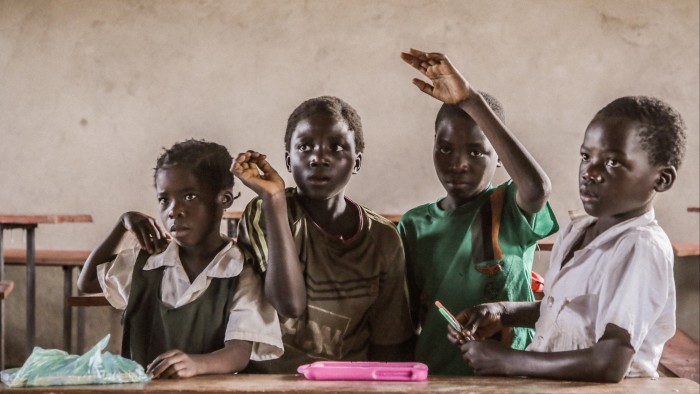
Simply sign up to the Education myFT Digest -- delivered directly to your inbox.
Education technology was adopted widely during the pandemic as schools around the world were forced to close and sought alternative ways to teach children.
While sometimes overhyped in the past — much-vaunted interactive whiteboards were often left unused — edtech now has the potential to support education in lower-income countries. The benefits can be as much for policymakers and school leaders as for teachers and students in the classroom and beyond. For example, online management systems can be used to track attendance and test scores, provide lesson plans and help allocate resources. Self-learning tools for students include supplementary apps, test preparation and live lessons.
“I think online learning and teaching will be a component of future schooling, even in less-developed countries,” says Professor Dato’ Ansary Ahmed, a board member of the International Council for Open and Distance Education and founder president of Asia e University, based in Kuala Lumpur, Malaysia.
He says the pandemic has been an opportunity to develop new approaches but adds that cost-effectiveness, user-friendliness and appropriateness of content must be assessed to determine edtech’s suitability for particular settings.
Not everyone is convinced of the merits of edtech. A review for the United States Agency for International Development last year found that there was “a lack of conclusive and robust research and study of distance-learning modalities, especially in the global south”.
Barriers to delivery can include funding, training, inadequate infrastructure, lack of devices and limited connectivity. Other questions include how far lack of access to the internet and mobile technology will increase the digital divide and inequality in poor and rural areas, and whether edtech draws resources from needs such as teacher recruitment and training. The importance of interactive learning and children developing face-to-face socialising skills are also concerns.
Despite this, the value of the digital learning market is predicted to reach $1tn by 2027, according to GSV Ventures, a venture capital fund specialising in edtech.
Prof Ansary says edtech providers must adapt their products and target the large volume of potential users in emerging markets with lower price points. “You have to customise it, contextualise it, localise it and bring the cost down so that it becomes something that is affordable in the region,” he says.
Sierra Leone
An advanced data visualisation tool is central to a school improvement package developed by Sierra Leone’s Ministry of Basic and Senior Secondary Education and its partners. The technology helps policymakers make investment decisions, such as where to build schools to achieve the greatest impact on access to education.
The project has been supported by EdTech Hub, a non-profit research partnership sponsored by the UK Foreign, Commonwealth and Development Office, the Bill & Melinda Gates Foundation and the World Bank.
“For me [the data tool] has the potential to reimagine or redefine how education planning is being done,” says Chris McBurnie, EdTech Hub’s country lead in Sierra Leone. “You can get this really granular analysis to inform your decisions.”
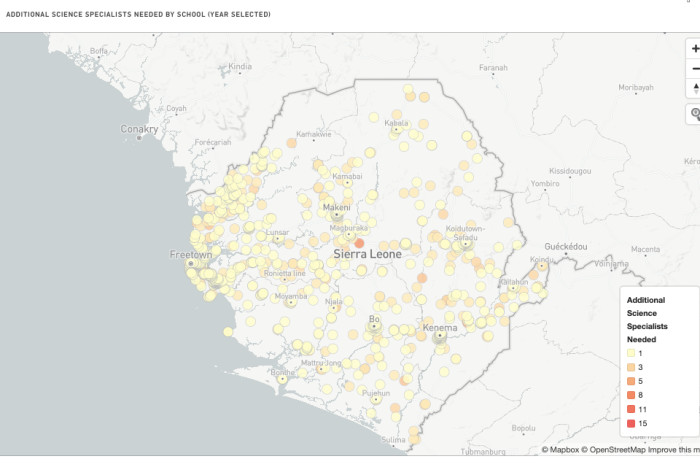
The tool, developed by education advisory company Fab Inc, which has drawn data from annual school censuses, will enable swift answers to questions informing policy decisions. The system could help distribute teachers by identifying areas lacking qualified staff and schools with shortages of subject specialists. Users will be able to filter metrics such as gender parity by national and district level.
Data analysis is also being carried out on the impact of the 2014 Ebola outbreak, to “inform the response and recovery from the Covid pandemic for education”. Patterns of hotspots where students did not return, for example, could be identified to develop interventions.
Data from another programme, One Tablet Per School, will also be incorporated, recording teacher registration, student enrolment and attendance for both.
Criteria for judging success include distribution and regularity of use, says McBurnie. “It is about how you think about how data actually translate into decision-making.”
Potential barriers to delivery include mobile data costs and possible political changes. A telecommunications provider has agreed to zero-rate the app so users do not have to pay for access, but a question remains over what might happen under a new administration.
EdTech Hub is involving civil servants in the project in an attempt to embed the approach, and is improving the programme to meet teachers’ needs.
Zambia
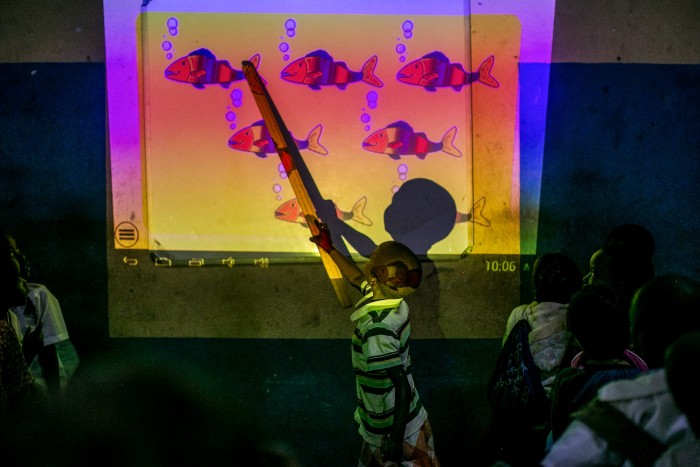
Edtech brings particular advantages in remote areas, says Reshma Patel, executive director of Impact Network, which uses its eSchool 360 blended teaching model in Zambia.
“In a rural place where you don’t get to go on field trips, you don’t get to go visit a museum, there are barely any signs in the village for you to read, I think the technology gives you an opening into a different world where you can learn about other things,” she says.
The model includes edtech components such as lesson plans and suggestions for group work using tablets and projectors. These are used by locally hired teachers and 6,000 students in 43 rural primary schools set up by the non-profit Impact Network, with some content in the local language Cinyanja supplied by partner Mwabu.
“The teachers generally like the support from the e-learning programme because it gives them good guidance. Especially for new teachers, it helps create a structure for them to meet their objectives,” says Patel. An American Institutes for Research report found that, by the end of the first 14 months, schools had improved levels of early-grade reading and mathematics and oral vocabulary.
The programme also provides electricity through solar panels and Patel says the presence of technology in schools helps build the community’s confidence in the standard of learning. The data collection app CommCare is used to flag problems with the panels, manage supplies and record attendance, test scores and teacher surveys.
Exam results each term are used to determine staff deployment. “If we are having a particularly challenging time in one school we might shift a really experienced teacher or manager there,” Patel says. The team also made curriculum changes after assessments when schools reopened following coronavirus closures last year.
Short-term plans include developing online literacy support activities such as a new phonics programme and language games. “The road to scaling, I feel, is more of an HR work product problem than a tech one,” Patel says. She stresses that it is essential to properly train teachers in how to use the devices and to have regular site visits to continue technical support and professional development.
Indonesia
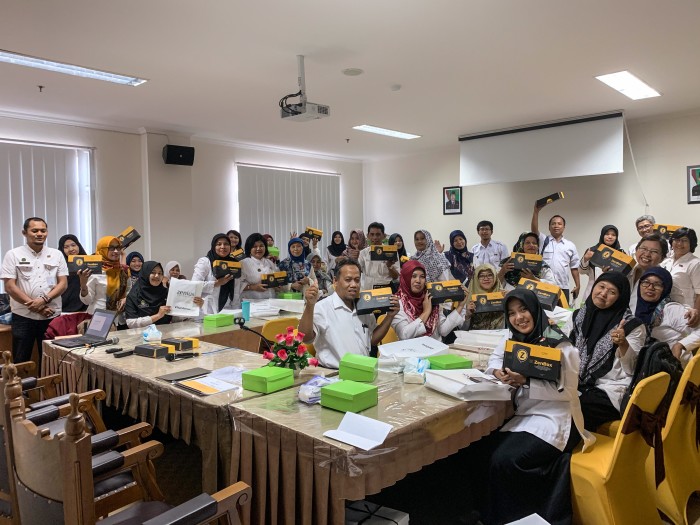
More than 110,000 teachers in Indonesia are using the Zenius app and free learning management system, according to the Jakarta-based edtech company. Zenius for Teachers includes access to a content library and automated grading of assignments using multiple choice answers, which generate “big picture” class and individual student reports.
“Teachers can use the time to do what they are best at, which is designing lessons for students and creating learning experiences in the virtual classroom,” says Amanda Witdarmono, head of the teachers’ initiative at Zenius.
Zenius measures weekly usage levels, noting that teachers regularly log on at weekends to prepare for the week ahead. It also hosts an online community with more than 20,000 teachers across Indonesia, running activities on technology skills, teaching techniques and informal Friday discussions.
Zenius’s edtech products for students include an artificial intelligence “doubt solving” tool that provides help with 125,000 mathematics questions a month, and an app feature that adjusts maths, English and verbal logic content and tests and training to the user’s level, using artificial intelligence and gamification. The company’s subscription model includes live classes for 10 to 18-year-olds and national college entrance exam preparation packages.
Witdarmono says technology helps with the logistics of education provision in a country of more than 17,000 islands but notes there are many cultural and linguistic differences. “To be able to deliver something that is relevant for everybody is pretty tricky,” she adds.
Zenius has also worked with two provincial governments on offline outreach, distributing its ZenBox, which contains teaching materials and allows local intranet connections.
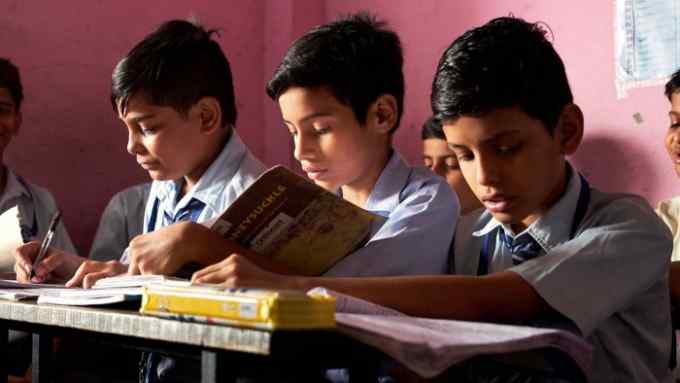
Comments